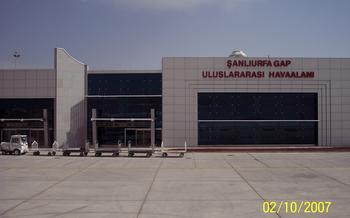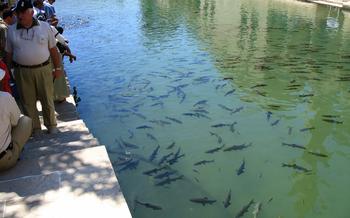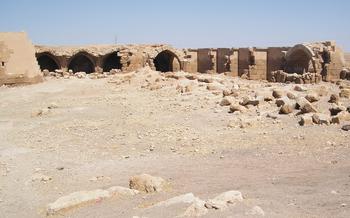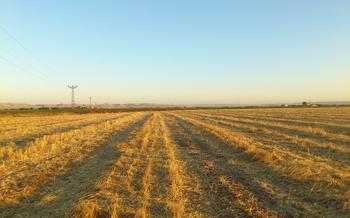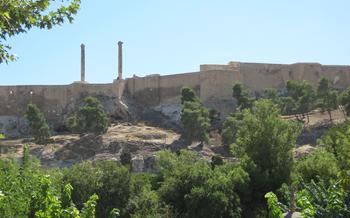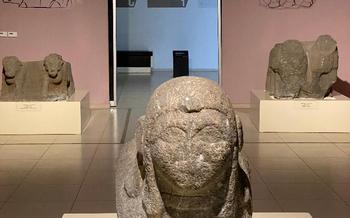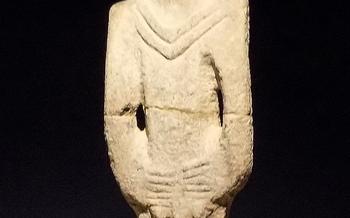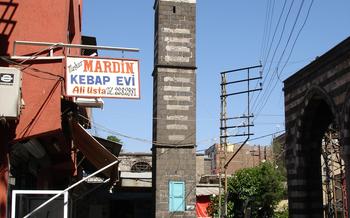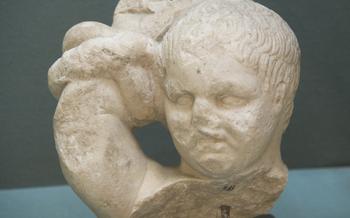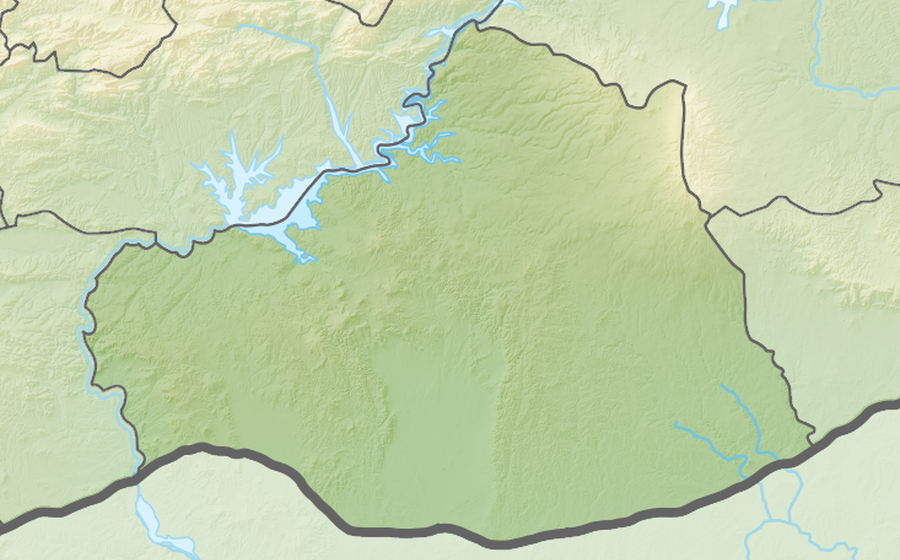
Edessa Mozaik Çalışmaları
- Şanlıurfa's Historical Significance:
- Edessa Mozaik Çalışmaları
- Highlights of the Mosaics:
- Exploring the Museum
- Duration of the Visit:
- Accessibility:
- Photography Tips
- Souvenirs and Gifts
- Nearby Attractions
- Family-Friendly Activities
- Seasonal Considerations
- Insider Tip: Unveiling Hidden Gems and Local Delights
Şanlıurfa's Historical Significance:
Şanlıurfa, a city nestled in southeastern Turkey, boasts a rich history dating back to the dawn of civilization. As the birthplace of the prophet Abraham, it holds a special place in religious and cultural heritage. Throughout history, Şanlıurfa has been a part of various empires, including the Hittites, Assyrians, Romans, and Ottomans, each leaving their mark on the city's architectural and cultural landscape. Discover the ancient roots of Şanlıurfa as you explore its historical sites, such as the majestic Şanlıurfa Castle, the mysterious Göbekli Tepe, and the awe-inspiring Harran Plain. Immerse yourself in the city's unique traditions, savor the local cuisine, and witness the vibrant festivals that celebrate Şanlıurfa's rich cultural heritage.
Edessa Mozaik Çalışmaları
The accidental discovery of the Edessa Mosaics during construction work in the 1980s revealed a hidden treasure of ancient art and history. Beneath the modern cityscape lay the remains of the Roman city of Edessa, once a significant trade and cultural center in the region.
Edessa, known in antiquity as the "City of Waters," was a prominent city in the Roman Empire. Its strategic location on the Silk Road made it a hub for trade and cultural exchange. The mosaics, now displayed in the Edessa Mozaik Çalışmaları museum, offer a glimpse into the artistry and craftsmanship of this ancient city.
Crafted by skilled mosaicists, the mosaics depict a diverse range of subjects, from mythological scenes and nature motifs to everyday life and religious iconography. The Orpheus mosaic, perhaps the most famous piece, showcases the mythical musician charming animals with his music. Hunting scenes, marine motifs, and intricate geometric patterns further enhance the visual splendor of these ancient artworks.
The Edessa Mozaik Çalışmaları represents a significant archaeological discovery that provides valuable insights into the history, culture, and art of the ancient Roman city of Edessa. Its exceptional artistic value and historical significance make it a must-visit destination for anyone interested in exploring the rich cultural heritage of Şanlıurfa.
Highlights of the Mosaics:
Among the captivating mosaics at the Edpheus Mosaic**. This stunning masterpiece depicts the mythical musician Orpheus with his enchanting lyre, surrounded by a captivated audience of animals. The intricate details and lifelike expressions of the figures showcase the exceptional artistry of the mosaicists.
Other highlights include the hunting scenes, which vividly portray the skill and prowess of ancient hunters as they pursue various animals amidst lush landscapes. The marine motifs, featuring graceful dolphins, colorful fish, and other aquatic creatures, add a touch of serenity and wonder to the collection.
Geometric patterns and borders complement the figurative scenes, creating a visually striking and harmonious overall composition. These intricate designs not only enhance the aesthetics of the mosaics but also serve as a testament to the mathematical and artistic knowledge of their creators.
Exploring the Museum
The Edessa Mozaik Çalışmaları is thoughtfully designed to showcase the mosaics in a captivating and immersive manner. Its layout consists of several galleries, each dedicated to specific themes or periods. As you wander through the galleries, you'll be struck by the sheer size and intricacy of the mosaics.
Interactive exhibits and multimedia presentations enhance the visitor experience by providing historical context, explaining the significance of the mosaics, and offering a glimpse into the lives of the ancient artisans who created them. These interactive elements make the museum particularly engaging for visitors of all ages, including families with children.
In addition to the mosaics, the museum also displays a collection of artifacts and sculptures that provide further insight into the region's rich history and culture. These artifacts include pottery, jewelry, coins, and religious objects, all of which contribute to a deeper understanding of the ancient civilization that once flourished in Edessa.
The museum's photography policy generally allows visitors to take pictures of the mosaics for personal use. However, it's important to be respectful of the exhibits and to avoid using flash photography, as it can damage the delicate mosaics. By following these guidelines, visitors can capture lasting memories of their visit to the Edessa Mozaik Çalışmaları.
Duration of the Visit:
The Edessa Mozaik Çalışmaları may not be extensive in size, but its intricate details and historical significance warrant a leisurely exploration. Set aside at least two hours to fully appreciate the collection. This will allow you to take your time examining each mosaic, delve into its symbolism, and soak in the artistic mastery on display. To optimize your visit, consider pacing yourself and taking breaks as needed. The museum provides comfortable seating areas where you can rest your feet and reflect on the wonders you've witnessed. For those with limited time, a one-hour visit can still offer a glimpse into the museum's highlights, but it may require a brisk pace. Plan your visit during off-peak hours to avoid crowds and fully immerse yourself in the tranquility of this artistic treasure.
Accessibility:
The Edessa Mozaik Çalışmaları is committed to providing an accessible and inclusive environment for all visitors. Wheelchair users will find the museum fully accessible, with ramps and elevators ensuring easy navigation throughout the galleries. Visitors with baby strollers are also welcome, and designated areas are available for stroller parking.
Regarding parking, there are several options near the museum. Visitors can choose from paid parking lots or utilize the convenient public transportation system to reach the museum. For specific accessibility-related inquiries, visitors can contact the museum directly or refer to the museum's website for comprehensive accessibility information.
Photography Tips
To capture the best shots of the Edessa Mozaik Çalışmaları's stunning mosaics, consider the following photography tips:
-
Lighting Conditions: Visit the museum during the day to take advantage of the natural light that illuminates the mosaics. Avoid using flash photography, as it can create harsh reflections and shadows.
-
Camera Settings: Use a wide-angle lens to capture the entire mosaic in one frame. Adjust your camera settings to a low ISO to minimize noise and a small aperture (high f-stop number) to ensure that the entire mosaic is in focus.
-
Composition and Angles: Experiment with different angles and compositions to create unique and visually appealing photographs. Try shooting from above or below the mosaics to achieve different perspectives.
-
Flash Photography: Flash photography is generally not permitted inside the museum to preserve the mosaics. However, if you need to use a flash, be sure to ask permission from the museum staff first.
Souvenirs and Gifts
The Edessa Mosaic Museum houses a gift shop where visitors can purchase a variety of souvenirs, books, and replicas related to the mosaics and the region's history. From intricately designed replicas of the Orpheus mosaic to books detailing the history and significance of the mosaics, there's something for every taste and budget.
In addition to the museum shop, visitors can explore the local markets or shops in Şanlıurfa to find traditional handicrafts, textiles, or other souvenirs representative of the city's rich culture. These markets offer a vibrant and authentic shopping experience, allowing visitors to interact with local artisans and find unique pieces that capture the essence of Şanlıurfa.
For those who prefer online shopping, several websites and online stores offer souvenirs and gifts related to the Edessa Mosaic Museum. These platforms provide a convenient way to purchase unique items from the comfort of home, with a wide range of options to choose from.
When selecting souvenirs, consider items that are not only visually appealing but also have a deeper connection to the Edessa mosaics or Şanlıurfa's history and culture. These souvenirs will serve as lasting reminders of your visit and help you share the region's rich heritage with friends and family back home.
Nearby Attractions
A visit to the Edessa Mozaik Çalışmaları can be easily combined with other captivating attractions in Şanlıurfa. The city's iconic landmark, Şanlıurfa Castle, stands tall just a short distance away, inviting visitors to explore its ancient fortifications and panoramic views. For those seeking a glimpse into the region's distant past, Göbekli Tepe, the world's oldest known temple, is a must-see. Located just 18 kilometers from the city center, this UNESCO World Heritage Site boasts mysterious stone circles and enigmatic carvings that have captivated archaeologists and historians alike.
Venturing further afield, the Harran Plain, situated 44 kilometers from Şanlıurfa, offers a unique and awe-inspiring landscape. Dotted with intriguing beehive-shaped houses, this ancient settlement provides a glimpse into a bygone era. Visitors can immerse themselves in the region's rich history and culture by exploring the preserved ruins and engaging with the local communities.
Şanlıurfa's culinary scene is not to be missed, and visitors are encouraged to savor the city's delectable delights. From mouthwatering street food to renowned restaurants, Şanlıurfa offers a culinary journey like no other. Indulge in the flavors of traditional dishes such as çiğ köfte, lahmacun, and Şanlıurfa kebabs, and discover the secrets of the region's unique cuisine.
Family-Friendly Activities
The Edessa Mozaik Çalışmaları offers several interactive exhibits and activities that are designed to engage children and families. Kids can participate in hands-on workshops where they can create their own mosaic designs or learn about the history and techniques of mosaic making. Educational programs and workshops are also offered throughout the year, providing families with opportunities to explore the museum's collection and learn about the ancient city of Edessa in a fun and interactive way.
To make the visit even more engaging for children, consider organizing a scavenger hunt or quiz related to the mosaics. This will encourage them to explore the museum actively and learn about the different motifs and scenes depicted in the mosaics. Family-friendly guided tours are also available, providing age-appropriate explanations and activities that will keep children entertained and informed throughout the tour.
Seasonal Considerations
To ensure the most enjoyable visit to the Edessa Mozaik Çalışmaları, it's essential to consider the best time of year to go. The most favorable period is during the shoulder seasons, spring (April-May) and fall (September-October), when the weather is pleasant with fewer crowds. Summer months (June-August) can be hot and crowded, so it's best to avoid them if you prefer a more relaxed experience. Winter (November-March) can bring cold weather and occasional snow, so be prepared with warm clothing. Additionally, check for any special events or exhibitions that may be held at the museum during your intended visit.
Insider Tip: Unveiling Hidden Gems and Local Delights
For an unforgettable culinary experience, venture beyond the museum grounds and seek out the hidden gem known as "Kebapçı Halil Usta." This local eatery, nestled in the heart of Şanlıurfa, has been serving mouthwatering kebabs for generations. Indulge in the succulent flavors of their signature dish, prepared with tender meat, aromatic spices, and grilled to perfection. Pair your meal with a refreshing ayran, a traditional yogurt drink, and savor the authentic taste of Şanlıurfa's culinary heritage.
To capture stunning photographs of the mosaics, take advantage of the museum's natural lighting. Position yourself at an angle to minimize reflections and bring out the vibrant colors of the tesserae. Experiment with different camera settings to achieve the desired depth of field and sharpness. For a unique perspective, try capturing the mosaics from above or below, using a wide-angle lens to encompass the grandeur of the entire composition.
Finally, step off the beaten path and explore the nearby Harran Plain, a captivating landscape dotted with ancient beehive-shaped houses. These remarkable structures, made of mud bricks, have stood the test of time and offer a glimpse into the region's rich history and architectural heritage. Wander through the village, interact with the locals, and immerse yourself in the charm of this unique destination.
